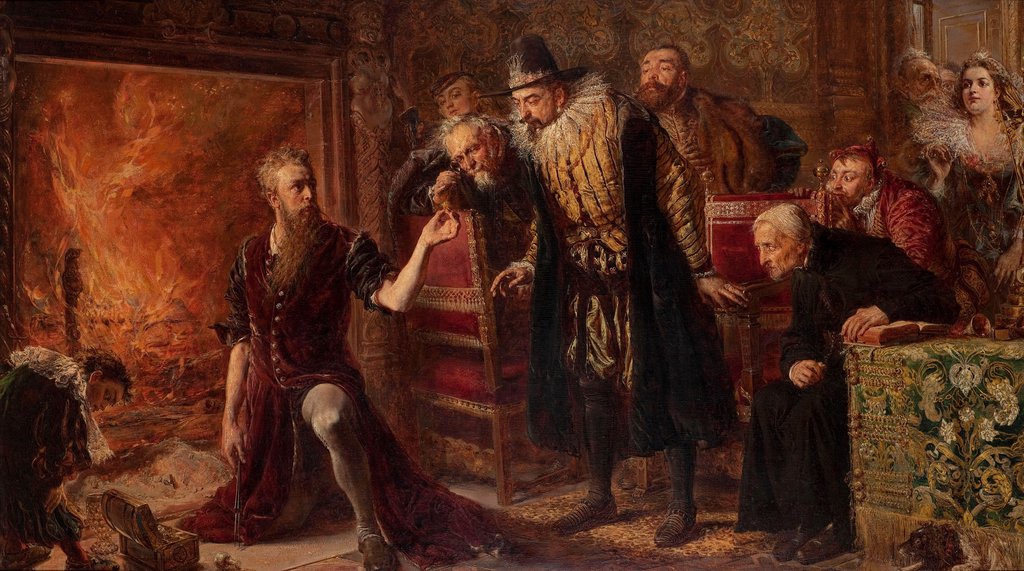The Guide to Alchemy & the Mystery of the Ancient Craft Revealed
Introduction
For those who enjoy the magic and mystery of alchemy, we hope you enjoy this beginner’s Guide to Alchemy.
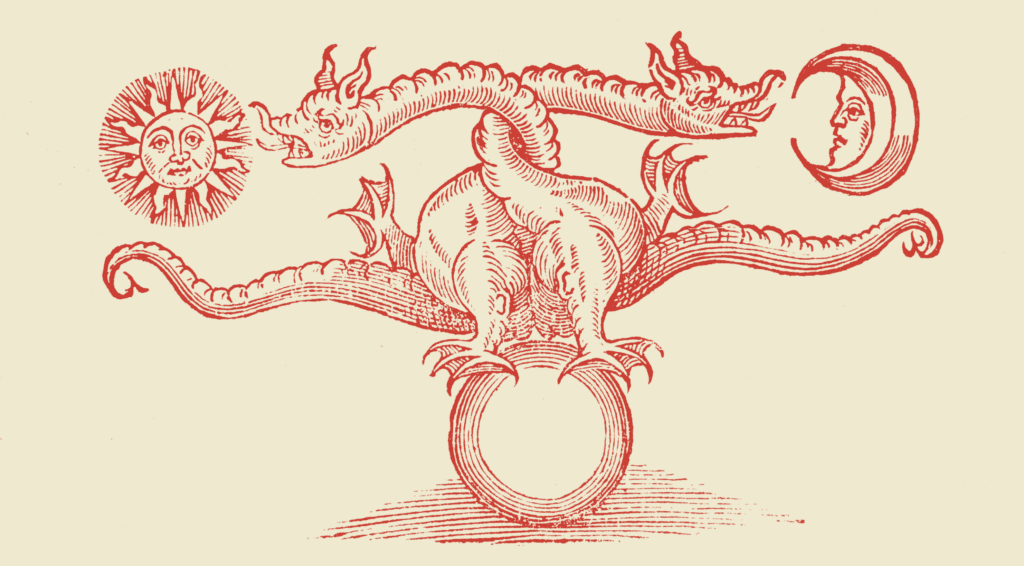
Alchemy is a philosophical and proto-scientific tradition that aims to transform base metals into noble ones, discover the elixir of life, and achieve spiritual enlightenment. Although often associated with the transmutation of metals, alchemy encompasses a wide range of practices, including herbalism, astrology, and spiritual alchemy. This guide will provide an overview of alchemy’s history, principles, symbols, and notable figures.
The study of Alchemy is now made more accessible through this concise Guide to Alchemy.
For everyone interested in alchemy, the practice of alchemy and the basic principles of turning lead into gold relate to the inner-workings of alchemy. For many, the powers of alchemy transform your life with the principles set out by the Great Alchemists with mastery over this ancient art. This age-old mystical science based around transforming Philosophical lead into Philosophical Gold is a precursor to modern chemistry linked to the history of science.
History of Alchemy
Origins
The origins of alchemy can be traced back to ancient civilizations such as Egypt, China, and India. In Egypt, alchemy was closely associated with metallurgy and embalming rituals. The legendary figure of Hermes Trismegistus, a mythical sage credited with the authorship of alchemical texts, embodies the fusion of Egyptian and Greek influences.
Middle Ages and Renaissance
Alchemy flourished during the Middle Ages and Renaissance in Europe, particularly during the Islamic Golden Age. Alchemists such as Jabir ibn Hayyan and Geber made significant contributions to the field, laying the groundwork for later developments.
The Mystery of the Ancient Craft
Alchemy, an ancient and enigmatic craft, has captured the imagination of humanity for centuries with its mystical allure and promises of transmutation. Originating in various civilizations, including Ancient Egypt, China, and Greece, alchemy encompasses many practices blending elements of philosophy, mysticism, and proto-science.
The mystery of the ancient craft of alchemy lies in its multifaceted nature, as practitioners sought not only to transform base metals into gold but also to unlock the secrets of existence, achieve spiritual enlightenment, and discover the elixir of life.
Alchemical texts and manuscripts are veiled in symbolism and allegory and often elude straightforward interpretation, adding to their enigmatic appeal. Despite its historical association with esotericism and pseudoscience, alchemy played a significant role in the development of modern chemistry and continues to fascinate scholars and seekers of arcane wisdom alike.
Modern Era
With the rise of modern science and the advent of the scientific method, alchemy gradually fell out of favour as a legitimate scientific pursuit. However, the symbolism and philosophical underpinnings of alchemy continued influencing various esoteric traditions and spiritual movements.
Principles of Alchemy
The Three Principles
Alchemy is based on three fundamental principles:
1. Sulfur (Sulphur) represents the soul, vitality, and combustibility.
2. Mercury (Quicksilver) symbolizes spirit, volatility, and transformation.
3. Salt embodies the physical body, stability, and materiality.
The Magnum Opus (Great Work)
The Magnum Opus refers to the alchemical process of achieving enlightenment or transmuting base metals into gold. It typically involves four stages:
1. Nigredo (Blackening): The initial stage of putrefaction and dissolution, symbolizing the breaking down of the Prima Materia (prime matter).
2. Albedo (Whitening): Purification and separation of impurities, leading to the emergence of the philosopher’s stone.
3. Citrinitas (Yellowing): The stage of enlightenment and spiritual illumination, symbolized by the appearance of a golden color.
4. Rubedo (Reddening): The final stage of perfection and union, where the philosopher’s stone achieves its full potential, symbolized by the transformation of base metals into gold.
Transmutation
Transmutation, the central goal of alchemy, refers to the transformation of base metals such as lead into noble metals like gold. While literal transmutation remains elusive, alchemists often interpreted it as a metaphor for spiritual enlightenment and personal transformation.
Symbols of Alchemy
Philosopher’s Stone
The Philosopher’s Stone is a legendary substance believed to have the power to transmute base metals into gold and grant immortality. It is also seen as a symbol of spiritual enlightenment and inner transformation.
Ouroboros
The Ouroboros is an ancient symbol depicting a serpent or dragon eating its tail, forming a circle. It symbolizes cyclicality, eternity, and the unity of opposites.
Caduceus
The Caduceus symbolizes two entwined serpents around a winged staff, often mistakenly associated with medicine. In alchemy, it represents balance, harmony, and the integration of opposing forces.
Seven Metals of Antiquity
The seven metals of antiquity (gold, silver, copper, iron, mercury, lead, and tin) were believed to correspond to the seven celestial bodies (Sun, Moon, Venus, Mars, Mercury, Saturn, and Jupiter) and the seven classical planets.
List of Alchemical Symbols and their meanings
The Philosopher’s Stone
 The symbol of the Philosopher’s Stone consists of a large, unfilled circle, within which is a triangle, containing a square, within which is a circle. The Philosopher’s Stone was said to transmute base metals (like Lead) into Gold and is thought to hold the key to eternal life.
The symbol of the Philosopher’s Stone consists of a large, unfilled circle, within which is a triangle, containing a square, within which is a circle. The Philosopher’s Stone was said to transmute base metals (like Lead) into Gold and is thought to hold the key to eternal life.
Lead
 The symbol for Lead consists of a long vertical line intersected by a short horizontal line. From the median point of the vertical line, a curved line moves away to the right. Lead is a malleable metal with a low melting point. It is associated with Saturn.
The symbol for Lead consists of a long vertical line intersected by a short horizontal line. From the median point of the vertical line, a curved line moves away to the right. Lead is a malleable metal with a low melting point. It is associated with Saturn.
Iron
 The symbol for Iron consists of a large, unfilled circle. On top of which is an arrow pointing away and to the upper right. It resembles the symbol of masculinity. Iron is the most common element found on Earth and is associated with the planet Mars.
The symbol for Iron consists of a large, unfilled circle. On top of which is an arrow pointing away and to the upper right. It resembles the symbol of masculinity. Iron is the most common element found on Earth and is associated with the planet Mars.
Potash
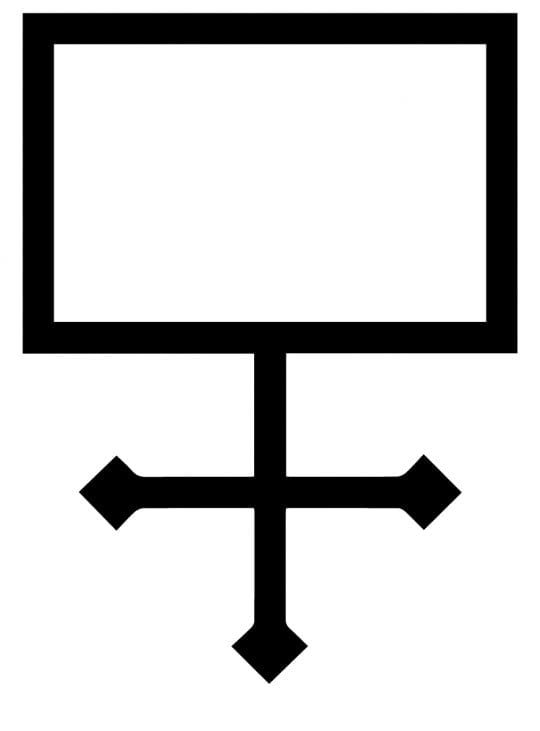 The symbol for Potash consists of a regular rectangular shape, and below it is a cross made from an intersecting vertical and horizontal line. Small, unfilled diamond shapes bookend these lines. Potassium Carbonate is a salt that forms an alkaline solution, often called the ‘salt of tartar’.
The symbol for Potash consists of a regular rectangular shape, and below it is a cross made from an intersecting vertical and horizontal line. Small, unfilled diamond shapes bookend these lines. Potassium Carbonate is a salt that forms an alkaline solution, often called the ‘salt of tartar’.
Zinc
 The symbol for zinc consists of a matrix of two sets of intersecting parallel horizontal and vertical lines. Small, unfilled diamond shapes bookend the lines. A rectangular shape is created in the centre of these lines, containing two small, unfilled circles. Alchemists would sometimes refer to zinc as ‘Philosophers’ wool’.
The symbol for zinc consists of a matrix of two sets of intersecting parallel horizontal and vertical lines. Small, unfilled diamond shapes bookend the lines. A rectangular shape is created in the centre of these lines, containing two small, unfilled circles. Alchemists would sometimes refer to zinc as ‘Philosophers’ wool’.
Magnesium
 The symbol for Magnesium consists of an unfinished circle dissected by a vertical line. A horizontal line emanates from the median point of the perpendicular, while a smaller vertical intersects to the right. Magnesium is highly volatile in small quantities and difficult to smother once alight. It represents infinity, eternity, and ascension.
The symbol for Magnesium consists of an unfinished circle dissected by a vertical line. A horizontal line emanates from the median point of the perpendicular, while a smaller vertical intersects to the right. Magnesium is highly volatile in small quantities and difficult to smother once alight. It represents infinity, eternity, and ascension.
Bismuth
 The symbol for Bismuth consists of an unfilled circle. Above the circle is a curved, semi-circle shape. The symbol represents Bismuth, a relatively uncommon and unknown element frequently mistaken for Tin and Lead. It’s not clear what part it played in the alchemical process.
The symbol for Bismuth consists of an unfilled circle. Above the circle is a curved, semi-circle shape. The symbol represents Bismuth, a relatively uncommon and unknown element frequently mistaken for Tin and Lead. It’s not clear what part it played in the alchemical process.
Phosphorus
 The symbol for Phosphorus ol consists of a
The symbol for Phosphorus ol consists of a
triangle shape with a horizontal base and the apex facing upwards. It is placed on top of a vertical line intersected by two horizontal lines. Phosphorus was the name given to Venus, seen as the Morning Star. It seemed to alchemists a substance that could capture light.
Arsenic
 The symbol for Arsenic consists of a narrow, inverted triangle shape placed on top of a line that resembles the inverted shape but does not connect at the horizontal base. Arsenic is a dangerous poison. It represents transformation.
The symbol for Arsenic consists of a narrow, inverted triangle shape placed on top of a line that resembles the inverted shape but does not connect at the horizontal base. Arsenic is a dangerous poison. It represents transformation.
Platinum
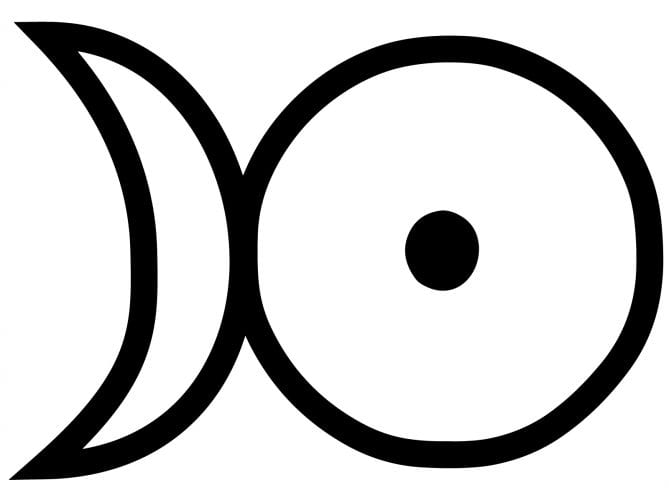 The symbol for Platinum is a crescent moon shape, inverted to face left. This shape is connected to an equally sized unfilled circle containing a significantly smaller circle. Platinum was thought, amongst alchemists, to be the combination of Silver and Gold. The symbol incorporates the signs of the sun and moon associated with these metals.
The symbol for Platinum is a crescent moon shape, inverted to face left. This shape is connected to an equally sized unfilled circle containing a significantly smaller circle. Platinum was thought, amongst alchemists, to be the combination of Silver and Gold. The symbol incorporates the signs of the sun and moon associated with these metals.
Antimony
 The symbol for Antimony consists of a large, unfilled circle, with a small cross emanating from the uppermost median point. Antimony represents man’s free spirit or animal nature. It was sometimes associated with the wolf.
The symbol for Antimony consists of a large, unfilled circle, with a small cross emanating from the uppermost median point. Antimony represents man’s free spirit or animal nature. It was sometimes associated with the wolf.
Tin
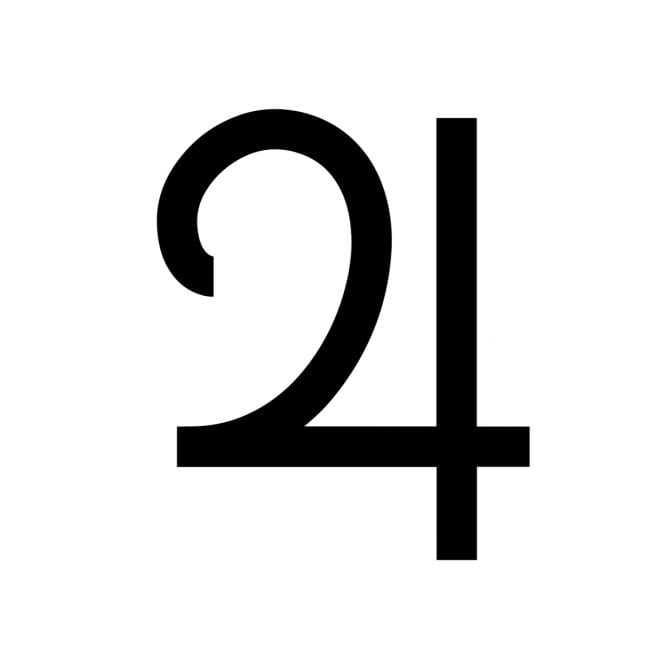 The symbol for Tin consists of a curved line
The symbol for Tin consists of a curved line
that connects to the horizontal, itself intersected by a large vertical line. The symbol represents Tin and also Jupiter. Tin is sometimes called the ‘breath of life.’ It represents the idea that the whole is stronger than the sum of its parts.
Gold
 Like Silver, Gold was also represented in more than one way in alchemy. One symbol for Gold consists of an unfilled circle surrounded by lines that curve in an anti-clockwise direction. The main symbol is a depiction of the sun. Gold is considered a noble metal, the ultimate goal of alchemical transmutation. It represents the perfection of the mental, physical, and spiritual.
Like Silver, Gold was also represented in more than one way in alchemy. One symbol for Gold consists of an unfilled circle surrounded by lines that curve in an anti-clockwise direction. The main symbol is a depiction of the sun. Gold is considered a noble metal, the ultimate goal of alchemical transmutation. It represents the perfection of the mental, physical, and spiritual.
Silver
 The symbol for Silver consists of a crescent moon shape. Silver, along with the moon, is associated with femininity. The symbol represents contemplation, intuition, and wisdom.
The symbol for Silver consists of a crescent moon shape. Silver, along with the moon, is associated with femininity. The symbol represents contemplation, intuition, and wisdom.
Copper
 The symbol for Copper is a large X shape, intersected by three horizontal lines at the median point and upper and lower thirds. Small, unfilled circles bookend the upper and lower horizontal lines, while the line that crosses the median point is shorter and bookended by unfilled diamond shapes. The symbol is associated with Venus and represents love and femininity; see the symbol.
The symbol for Copper is a large X shape, intersected by three horizontal lines at the median point and upper and lower thirds. Small, unfilled circles bookend the upper and lower horizontal lines, while the line that crosses the median point is shorter and bookended by unfilled diamond shapes. The symbol is associated with Venus and represents love and femininity; see the symbol.
Mercury
 The symbol for Mercury consists of an unfilled circle on top of a cross, connecting with the lowest median point. Above the circle is a curved, semi-circle shape. Mercury (called quicksilver) is one of the three prime materials of alchemy. It represents the mind, as well as the life force. It is associated with the spirit, the thing that survives beyond death.
The symbol for Mercury consists of an unfilled circle on top of a cross, connecting with the lowest median point. Above the circle is a curved, semi-circle shape. Mercury (called quicksilver) is one of the three prime materials of alchemy. It represents the mind, as well as the life force. It is associated with the spirit, the thing that survives beyond death.
Salt
 The symbol for Salt consists of a large, unfilled circle, the diameter of which is defined by a solid, horizontal line. Salt is one of the three prime materials of alchemy and is necessary for life. It represents condensation and crystallization. It is associated with the essence of all things in nature.
The symbol for Salt consists of a large, unfilled circle, the diameter of which is defined by a solid, horizontal line. Salt is one of the three prime materials of alchemy and is necessary for life. It represents condensation and crystallization. It is associated with the essence of all things in nature.
Sulfur
 The symbol for Sulphur consists of a triangle with a flat base and the apex facing upwards, placed on top of a cross, which connects with the median point of the base. Sulfur is one of the three prime materials of alchemy. It represents evaporation and dissolution. It is associated with heat and dryness, as well as masculinity.
The symbol for Sulphur consists of a triangle with a flat base and the apex facing upwards, placed on top of a cross, which connects with the median point of the base. Sulfur is one of the three prime materials of alchemy. It represents evaporation and dissolution. It is associated with heat and dryness, as well as masculinity.
Air
 The symbol for Air consists of a triangle with a flat base and the apex facing upwards. A horizontal line intersects the centre of the triangle. The symbol represents Air. It is the inverse of the earth symbol. It represents wetness and warmth.
The symbol for Air consists of a triangle with a flat base and the apex facing upwards. A horizontal line intersects the centre of the triangle. The symbol represents Air. It is the inverse of the earth symbol. It represents wetness and warmth.
Fire
 The symbol for Fire consists of a triangle with a flat base and the apex facing upwards. The symbol represents Fire. It is the inverse of the water symbol. It represents heat and dryness, as well as masculinity.
The symbol for Fire consists of a triangle with a flat base and the apex facing upwards. The symbol represents Fire. It is the inverse of the water symbol. It represents heat and dryness, as well as masculinity.
Water
 The symbol for Water consists of a triangle with the apex facing downwards. The symbol represents Water. It is the inverse of the fire symbol and is thought to resemble a glass or cup. It represents wetness and coldness, as well as femininity.
The symbol for Water consists of a triangle with the apex facing downwards. The symbol represents Water. It is the inverse of the fire symbol and is thought to resemble a glass or cup. It represents wetness and coldness, as well as femininity.
Earth
 The symbol for Earth consists of a triangle with the apex facing downwards. A horizontal line intersects the centre of the
The symbol for Earth consists of a triangle with the apex facing downwards. A horizontal line intersects the centre of the
triangle. The symbol represents Earth. It is the inverse of the air symbol. It represents coldness and dryness.
Notable Alchemists and Figures in Alchemy
Hermes Trismegistus
Hermes Trismegistus is a mythical figure credited with authoring the Corpus Hermeticum, a series of alchemical and philosophical texts that became foundational to Hermeticism and alchemy. See the article for more: Alchemy in Ancient Greece & the Alchemist Hermes Trismegistus.
Paracelsus
Paracelsus, a Swiss physician and alchemist, made significant contributions to medicine, chemistry, and alchemy. He introduced the concept of “spagyrics,” a form of herbal alchemy that emphasized using alchemical processes to extract and refine medicinal compounds from plants.
Nicolas Flamel
Nicolas Flamel, one of history’s most famous alchemists, captivates the imagination with his legendary quest for the Philosopher’s Stone and reputed immortality. His enigmatic life and purported alchemical achievements have inspired countless tales and fueled speculation for centuries. However, alongside the mystical figure of Nicolas Flamel stands his equally intriguing wife, Perenelle Flamel.
While historical records regarding Perenelle are sparse, she is often depicted as a critical collaborator in their alchemical pursuits, contributing her wisdom and knowledge to their shared endeavours. Nicolas and Perenelle Flamel represent a partnership symbolic of the alchemical journey, where the union of opposites catalyzes transformation and growth. Other alchemists like Nicolas Flamel linked to “The Stone of the Philosopher” include Johannes Valentinus Andreae, Elias Ashmole, and the legendary figure, the Count of St. Germain.
Isaac Newton
Isaac Newton, best known for his contributions to physics and mathematics, was also an avid alchemist. He conducted alchemical experiments and wrote extensively on the subject, seeking to uncover the hidden secrets of nature.
Unveiling the Mysteries: Practical Lessons and Exercises in Alchemy
Alchemy, once considered a mystical pursuit shrouded in secrecy and symbolism, offers practical lessons and exercises for those drawn to its esoteric depths. While historically associated with the quest for turning base metals into gold and the pursuit of an elixir of immortality, alchemy encompasses a rich tapestry of spiritual, psychological, and philosophical teachings. This Guide to Alchemy delves into practical lessons and exercises lessons and exercises to enhance your life derived from alchemical principles you can apply for personal growth and transformation in modern contexts.
- Understanding the Principles: At the heart of alchemy lies the principle of transmutation – the idea of transforming one substance into another, often symbolized by the transmutation of base metals into gold. This principle serves as a metaphor for inner transformation, wherein the alchemist seeks to transmute their base qualities into higher virtues. Practical exercises may include introspective reflection on one’s flaws and negative traits and deliberate efforts to cultivate positive qualities and virtues.
- Inner Work and Self-Reflection: Alchemy emphasizes the importance of inner work and self-reflection as essential components of the alchemical process. Practitioners may engage in meditation, journaling, or dream analysis to explore their subconscious mind and uncover hidden aspects of their psyche. Individuals can achieve greater self-awareness and inner harmony by confronting and integrating these shadow elements.
- Alchemy of Relationships: The alchemical metaphor of the union of opposites, often represented by the marriage of the sun and moon, extends to relationships. Practical lessons in alchemy teach the importance of balancing masculine and feminine energies within oneself and interpersonal dynamics. Exercises include exploring the dynamics of power and vulnerability in relationships, fostering empathy and understanding, and seeking harmony through mutual respect and cooperation.
- Alchemy of Health and Wellness: Alchemy views the human body as a microcosm reflecting the macrocosm of the universe, with the goal of achieving balance and harmony within. Practical exercises in alchemy may involve dietary practices aimed at purifying the body, herbal remedies for physical ailments, and energetic practices such as qigong or yoga to promote vitality and well-being.
- Alchemy of Creativity: Creativity and artistic expression are integral to the alchemical process, serving as vehicles for soulful transformation. Practical exercises may include engaging in artistic pursuits such as painting, writing, or music composition to explore inner symbolism and express one’s innermost thoughts and emotions. Individuals can tap into their subconscious mind and unleash their creative potential through the creative process.
- Transforming yourself and the world: Alchemy offers a treasure trove of practical lessons and exercises that resonate deeply with the human experience. By embracing the principles of transmutation, inner work, balance, and creativity, individuals can embark on a transformative journey of self-discovery and personal growth.
Conclusion to The Guide to Alchemy
There is a lot more to alchemy, with its rich history, intricate symbolism, and profound philosophical insights. It continues to captivate the imagination of scholars, artists, and seekers of esoteric knowledge. While its practical applications have been mainly supplanted by modern science, the legacy of alchemy lives on in various spiritual traditions and cultural artefacts, reminding us of humanity’s eternal quest for wisdom and transformation. As we navigate the complexities of modern life, the timeless wisdom of alchemy serves as a guiding light, illuminating the path toward greater understanding, harmony, and fulfilment.
Citations:
- Coudert, A. P. (2006). Alchemy: The Philosopher’s Stone. Wildside Press.
- Faivre, A. (1995). Access to Western Esotericism. State University of New York Press.
- Jung, C. G. (1968). Psychology and Alchemy. Princeton University Press.
- Newman, W. R. (2006). The Secrets of Alchemy. University of Chicago Press.
- Principe, Lawrence M. The Secrets of Alchemy. Chicago: The University of Chicago Press, 2013.
- Holmyard, E. J. Alchemy. New York: Dover Publications, 1990.
- Jung, C. G. Alchemical Studies. Princeton: Princeton University Press, 1983.
- Newman, William R. Promethean Ambitions: Alchemy and the Quest to Perfect Nature. Chicago: The University of Chicago Press, 2004.
- Knight, G. (2015). Practical Alchemy: Pathworking in the 21st Century. Llewellyn Publications.
- Pennick, N. (1995). Practical Magic in the Northern Tradition. Llewellyn Publications.
- Regardie, I. (2002). The Philosophers Stone. Llewellyn Publications.
